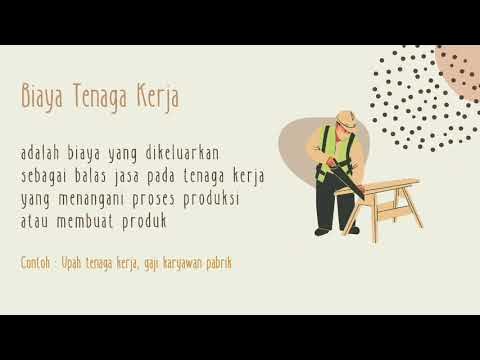Elements of cost | Direct and Indirect: Material, Labor, & Expenses
Summary
TLDRThis video explores the three key elements of cost in manufacturing: material, labor, and expenses. Material cost includes direct (raw materials like milk for butter) and indirect (like cotton waste). Labor cost is divided into direct (workers in production) and indirect (support staff). Expenses cover direct costs tied to specific jobs and indirect costs like rent and utilities. Understanding these costs is crucial for business efficiency.
Takeaways
- 🔍 The cost of an industrial enterprise is divided into three principal elements: material cost, labor cost, and expenses.
- 🏭 Material cost includes both direct material cost (raw materials necessary for production) and indirect material cost (materials necessary for the production process but not part of the final product).
- 🔨 Direct material cost varies with the level of output, such as the amount of milk used to make butter.
- ⚙️ Indirect materials are used in production but do not become part of the product, like cotton waste or sandpaper.
- 👷 Labor cost encompasses direct labor cost (cost of labor directly involved in production) and indirect labor cost (cost of labor that supports production operations but is not directly traceable to a specific job).
- 🛠️ Direct labor cost is associated with workers directly engaged in production, such as assemblers or carpenters.
- 👮 Indirect labor cost includes remuneration for labor that aids production, like inspectors, watchmen, and storekeepers.
- 💼 Clerical, managerial, sales, and distribution employees are also considered part of indirect labor costs.
- 💸 Expenses are costs of services and the theoretical cost of using owned assets, which are not directly linked to labor or material costs.
- 📊 Direct expenses are those that can be directly identified with a specific job or process, while indirect expenses are common costs incurred for multiple jobs or processes, such as rent or advertising.
Q & A
What are the three principal elements of cost in an industrial enterprise?
-The three principal elements of cost in an industrial enterprise are material cost, labor cost, and expenses.
What is direct material cost and how does it vary?
-Direct material cost is the cost of raw materials necessary to produce or manufacture a product. It varies according to the level of output.
Can you provide an example of direct material?
-An example of direct material is milk, which is used to produce butter.
What is indirect material cost and what are some examples of indirect materials?
-Indirect material cost is the cost associated with materials necessary for the production process but not directly used in the product itself. Examples include cotton waste, sandpaper, oil, greases, etc.
How can the same material be both direct and indirect material?
-The same material can be direct material for one producer and indirect material for another, depending on how it is used in the production process.
What is labor cost and how is it divided?
-Labor cost is the cost of salary, wages, bonus, and commission of the employees of a company. It is divided into direct labor cost and indirect labor cost.
Give an example of direct labor cost.
-Direct labor cost includes the cost of labor directly engaged in production operations, such as workmen assembling parts or carpenters making furniture.
What is indirect labor cost and who does it include?
-Indirect labor cost includes the remuneration paid for labor engaged to help production operations but not directly traced to a job process or production order. It includes inspectors, watchmen, sweepers, storekeepers, and other staff whose labor costs are not directly attributed to specific jobs or processes.
What are expenses and how are they categorized?
-Expenses are the cost of services provided to an undertaking and the theoretical cost of the use of owned assets. They are categorized into direct expenses and indirect expenses.
What is a direct expense and provide an example?
-A direct expense is an expense that can be directly identified with a unit of output, job process, or operation. An example is the cost of special patterns, designs, or plans for a particular job or work order.
Can you explain indirect expenses with an example?
-Indirect expenses are expenses other than indirect material and indirect labor that cannot be directly identified with units of output, job process, or operation. They are incurred commonly for jobs and processes, such as rent, power, lighting, depreciation, bank charges, advertising, etc.
Outlines

This section is available to paid users only. Please upgrade to access this part.
Upgrade NowMindmap

This section is available to paid users only. Please upgrade to access this part.
Upgrade NowKeywords

This section is available to paid users only. Please upgrade to access this part.
Upgrade NowHighlights

This section is available to paid users only. Please upgrade to access this part.
Upgrade NowTranscripts

This section is available to paid users only. Please upgrade to access this part.
Upgrade NowBrowse More Related Video

Menghitung Harga Pokok Produksi - Part 1

(FACIL) Materiales Directos, Mano de Obra Directa, Costos Indirectos de Fábrica

Cost Terms and Concepts in Cost & Management Accounting Part 2, Manufacturing Costs, Mike Werner

ACCA F2 Cost Classification

Biaya Produksi - Materi PKK Kelas XI || Production Cost

Akuntansi untuk Tenaga Kerja part 1
5.0 / 5 (0 votes)